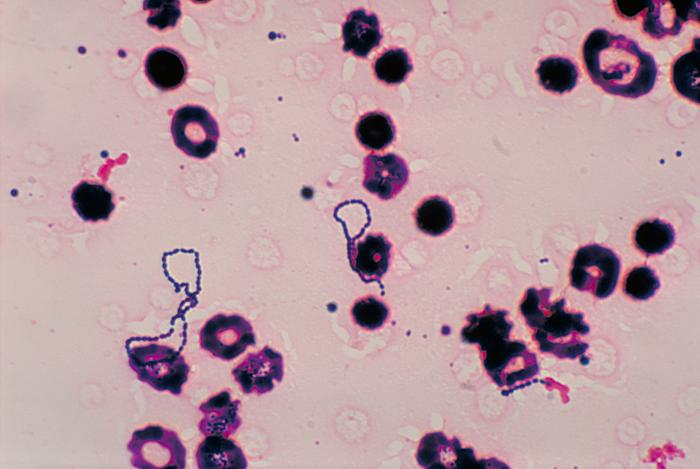Streptococcus Ferus on:
[Wikipedia]
[Google]
[Amazon]

Type strain of ''Streptococcus ferus'' at Bac''Dive'' - the Bacterial Diversity Metadatabase
{{Taxonbar, from=Q7623350 Streptococcaceae

Overview
''Streptococcus ferus'' is a facultatively anaerobic, gram-positive species of the genus ''Streptococcus
''Streptococcus'' is a genus of gram-positive ' (plural ) or spherical bacteria that belongs to the family Streptococcaceae, within the order Lactobacillales (lactic acid bacteria), in the phylum Bacillota. Cell division in streptococci occurs ...
''. The species is a member of the ''Viridans streptococci
The viridans streptococci are a large group of commensal streptococcal Gram-positive bacteria species that are α-hemolytic, producing a green coloration on blood agar plates (hence the name "viridans", from Latin "vĭrĭdis", green), although ...
'' group which are a large mixed-group of mostly alpha-hemolytic
Hemolysis (from Greek αιμόλυση, meaning 'blood breakdown') is the breakdown of red blood cells. The ability of bacterial colonies to induce hemolysis when grown on blood agar is used to classify certain microorganisms. This is particular ...
streptococci. The alpha-hemolytic bacteria are ones that exhibit a partial hemolysis
Hemolysis or haemolysis (), also known by several other names, is the rupturing (lysis) of red blood cells (erythrocytes) and the release of their contents (cytoplasm) into surrounding fluid (e.g. blood plasma). Hemolysis may occur in vivo o ...
with green coloration when grown on sheep blood agar (see image.)
Ecology
''Streptococcus ferus'' was originally isolated from the oral cavity wild rats who were living in sugar cane fields and eating a high sucrose diet The species name ''ferus'', meaning wild, refers to their association with these animals. More recently the strain has also been isolated from the nasal and oral cavities of pigs. The species has not been identified in any other host organisms.Morphology
''Streptococcus ferus'' aregram positive
In bacteriology, gram-positive bacteria are bacteria that give a positive result in the Gram stain test, which is traditionally used to quickly classify bacteria into two broad categories according to their type of cell wall.
Gram-positive bact ...
lanceolate
The following is a list of terms which are used to describe leaf morphology in the description and taxonomy of plants. Leaves may be simple (a single leaf blade or lamina) or compound (with several leaflets). The edge of the leaf may be regular o ...
coccobacillus
A coccobacillus (plural coccobacilli), or bacilluscocco, is a type of bacterium with a shape intermediate between cocci (spherical bacteria) and bacilli (rod-shaped bacteria). Coccobacilli, then, are very short rods which may be mistaken for coc ...
Non-motile and approximately 0.5 micrometers in diameter. They are non-sporulating and catalase-negative The majority of specimens test positive for the production of acetoin (Vogues-Proskauer reaction). They occur singly, in pairs or in short chains.
Pathogenicity
''Streptococcus ferus'' is commensal in wild rats and pigs and demonstrates a relatively weak cariogenic potential compared to other streptococcus species such as ''S. mutans'' ''S. ferus'' has not had any reported pathogenic instances in humans.History
''Streptococcus ferus'' was originally proposed as a species in 1977References
External links
Type strain of ''Streptococcus ferus'' at Bac''Dive'' - the Bacterial Diversity Metadatabase
{{Taxonbar, from=Q7623350 Streptococcaceae